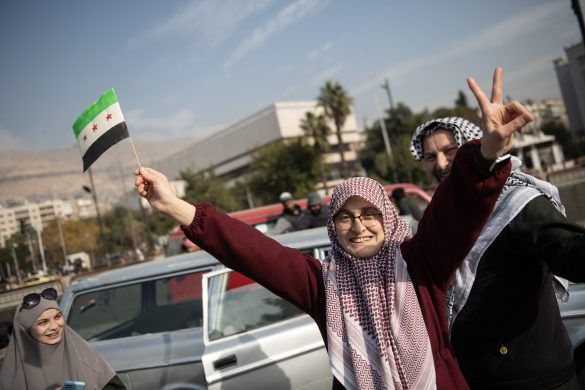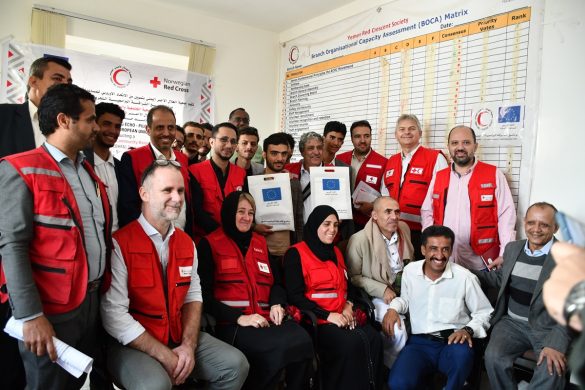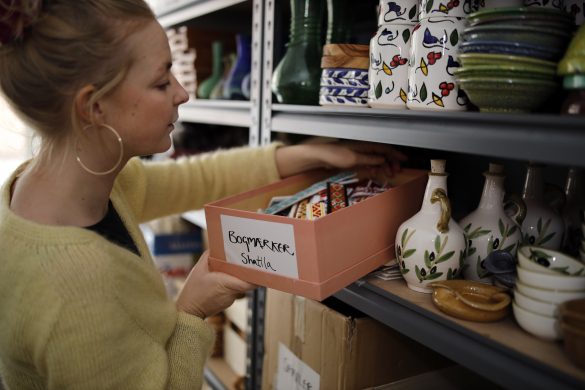Og netop dét overvejer oliemagnaterne i det store naboland efter at en radikal oprørsbevægelse overtog kontrollen med Yemens hovedstad, Sanaa, i september – landet på sydspidsen af Den Arabiske Halvø er i forvejen regionens fattigste og mest tilbagestående.
SANAA, 1 December 2014 (IRIN): Since rebels from the Houthi movement took hold of the capital Sana’a in September, Saudi Arabia, which has provided an estimated four billion US dollar (ca. 24 milliarder DKR) to keep the Yemeni economy afloat since early 2012, Saudi Arabia has been reviewing its economic support for its southern neighbour.
Among the key disbursements (udbetalinger) put on hold is 700 million dollar in military aid.
The deliberation comes at a time when fears of an impending economic collapse have risen, with UN envoy to Yemen Jamal Benomar warning it was unclear “whether Yemen would be able to continue to pay its civil servants after the end of the year”.
The ghost of 2011
Yemen’s economy, already fragile before the country’s 2011 uprising, was decimated by the unrest and elite infighting of that year.
The transitional administration of President Abd Rabbu Mansour Hadi has struggled to restore growth or provide basic services, and the poverty rate has remained stubbornly above 50 percent since early 2012.
The only reason the government has been able to stay afloat since 2012, officials and analysts say, is the largesse of Saudi Arabia, Yemen’s northern neighbour.
While the donations have never been made official, in 2012 Riyadh is believed to have deposited one billion dollar at the Central Bank of Yemen and given the country a further two billion in oil and fuel products to help shore up its finances.
In July 2014, Riyadh again bailed Sana’a out, providing 1.2 billion dollar in cash to help pay for fuel and another 435 million to help the government make welfare payments.
Failure to trim fuel subsidies
Part of the issue has been the failure to trim fuel subsidies. Yemen heavily subsidizes fuel in the local market, costing the government more than 3.3 billion dollar – about a quarter of all spending – in 2013.
In August, the government cut subsidies, leading to a price increase of up to 95 percent for fuel at the pump.
It partly reversed the decision less than two months later, decreasing fuel prices by 25 percent after the takeover of Sana’a by rebels from the northern Houthi movement, a Shia group with whom the Saudis have fought in the past.
Since the Houthi takeover no new Saudi funds have been disbursed, including 700 millon dollar in military aid agreed as part of the bailout package in July.
A number of diplomatic and government sources told IRIN that although there is unlikely to be a formal announcement that funding is being frozen, Riyadh will at the very least take a „go-slow‟ approach to transferring further funds to Sana’a until it is clear that the money will not financially benefit the Houthis.
“In conversation with [Yemeni] officials, they have been saying that they are not going to bring money to Yemen just to reinforce the Houthis,” said a senior Yemeni official, part of whose responsibilities is to report on government spending and finances.
“And whatever Saudi Arabia does, you know the other GCC [Gulf Cooperation Council] countries will do”, the official noted
Two other Yemeni government and Western diplomatic officials confirmed that the 700 million dollar had been expected but had not as yet been delivered.
A government running short on dollars
This has worsened other trends towards financial collapse.
Attacks on an important oil pipeline and electricity infrastructure in restive Mareb Province have cut off revenues and forced the government to import expensive fuel from abroad.
Thus the government is running short on dollars.
Foreign currency reserves fell from 4.4 billion to 3.8 billion dollar between September 2013 and September 2014, pushing the country towards a currency crisis. With the remaining reserves the bank can only afford to cover 4.8 months of imports, a record low.
Estimates of when the government would run out of money vary from the end of 2014 until early March 2015, but government officials and advisers make it clear that fiscal collapse is imminent.
“If there is no intervention, it is not a question of if, it is a question of when,” said the Yemeni official.
In line with other GCC officials, a senior Saudi diplomat said no formal decision had been made to halt aid or funding to Sana’a, but added that Riyadh is reviewing the situation in Yemen.
“We will see how the new government [formed in early November] does. If they can act independently [of the Houthis], then maybe we can work with them”, he said.
Where is the money going to welfare?
Saudi officials are also said to be frustrated that the 435 million dollar they gave Sana’a in July has not been distributed to the Social Welfare Fund (SWF), the state body tasked with overseeing welfare payments to 1.5 million of Yemen’s poorest people.
According to people familiar with talks that took place earlier in the year, the funds had been touted as the first in a series of payments to be used to underwrite the Fund’s costs.
A source at SWF told IRIN the government did not disburse the funds needed to make the first quarterly payment of 2014 – which had been due in January – until August.
The second tranche (portion penge) followed in September, but SWF is yet to receive payments for the third or fourth quarters, both of which should have been made by this point in the year.
“In the past, we paid at fixed times,” the source said. “Now we don’t know if or when we will be able to pay.”
Humanitarian crisis
Læs videre på
http://www.irinnews.org/report/100901/yemen-faces-economic-crisis-as-saudi-mulls-pulling-plug














